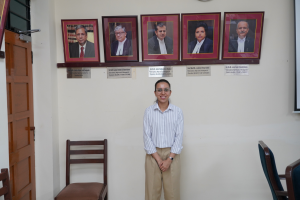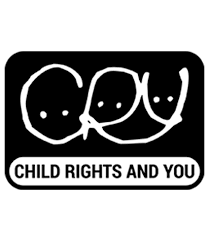Adolescence Web series- not just a story but a call for action!

~ By Aishwarya Sinha
Adolescence series (2025) on Netflix, written by Jack Thorne and Stephen Graham and directed by Philip Barantini which has 4 episodes, shows a dark reality of modern youth. It has an IMDb rating of 8.3/10 and is one of the most reviewed web series on Netflix. It shows how media, specifically social media impacts the minds of young people, their perception of self, the ideologies of masculinity and femininity and overall mental health of young people in the digital world which has repercussions in the real world in shaping their personality. The story highlights the parts of human emotions such as rage, humiliation, helplessness, which are sensitive parts of human beings, which have been suppressed in our subconscious mind and can make us do things that one doesn’t like in general.
Psychological theories reveal that we all have certain parts of us, which are wounded and suppressed, which when triggered can make us do things that stem from unresolved childhood needs, manifesting as defense mechanisms shaped by early experiences to cope with pain, fear, neglect or even violence. We need to address them through professional psychiatry and psychological intervention rather than denial.
The series beautifully portrays the realities and challenges of a 13 years old adolescent boy who is arrested for murder of a girl in school. It forces us to see the modern technological realities, cyberbullying and its impacts in real life, through not only the lens of the victim of the crime but also through the standpoint of juvenile lived experience. The series shows how such a case not only impacts the victim and accused of the crime but also to everyone around them such as families and friends of the accused and victim, the school children and authorities, the neighbors and the society as a whole.
It shows the psychological effect of cyberbullying and effects of absorption of toxic subcultures[i], ideas of masculinity and femininity online and its radicalization. It also shed light on the responsibility of social media platforms to implement child sensitive safety protocols (such as age verification mechanisms, strong privacy settings as the default for users under 18, behavioral analysis tools to detect grooming patterns), role of parents in monitoring (optional parental dashboards to monitor activity without invading privacy), guiding digital interactions to safeguard mental well-being of their child and the pressing need to evaluate and strengthen existing cyber safety laws such as IT Act, 2000; Bharatiya Nyaya Sanhita, 2023; The Digital Personal Data Protection Act (DPDP Act), 2023 and regulatory mechanisms to ensure they are responsive to the vulnerabilities of minors in the digital space.
It shows how toxic masculinity, incel movement, and concepts like “80:20 rule which claims that 80% of the women are only attracted to the top 20% of men”, which leads to insecurity and resentment among adolescent boys, profoundly shaping their self image and distorting their understanding of gender dynamics and self worth leading to aggressive behaviour and violence.
It shows the thin line between vulnerability and aggression and the effect of such harmful ideologies. At the end of the third episode of the series, after the psychological assessment of the juvenile, the boy asks the psychologist if she liked him or not and as the psychologist does not answers him, he feels rejected and get very aggressive and starts shouting loudly and banging windows and asking for her reply, which was intervened by the officer on duty who drags him out of that place and take him to his cell.
The boy’s sudden shift from a vulnerable question (“Did you like me?”) to aggressive outbursts upon receiving no response indicates poor emotional regulation. He appears unable to process perceived rejection or ambiguity in a healthy manner, instead reacting with intense frustration and rage. This may point toward an underlying emotional instability or attachment disturbance. The boy’s question itself, asking if the psychologist “liked” him also reflects a deep rooted need for validation and approval. Such behavior may stem from early attachment trauma, such as inconsistent caregiving, neglect, or emotional abandonment.
His intense reaction to the lack of an answer can be viewed as a triggered rejection sensitivity, commonly found in individuals with insecure or disorganized attachment styles. His inability to contain his emotions, leading to physical aggression (banging windows, shouting), highlights traits often associated with Conduct Disorder or Oppositional Defiant Disorder in adolescents, particularly when combined with a history of trauma or neglect.
The law mandates that every child who commits a heinous crime (such as rape, murder) should go through psychological assessment by a psychologist. During the psychological assessment in episode three, the juvenile says to the psychologist that he could have touched the victim girl if he wanted on the day of the incident but he didn’t so he was better off than a lot of men. The psychology of the child in conflict with law (CCL) is reflected here that he found stabbing the girl as right and masculine and his perception is that he did not do anything wrong in the situation. This indicates the troubling internalization of violence as a form of masculinity.
After analysing the series, I can conclude that this series is worth a watch for all personnel specifically who are working with children in conflict with law and also for the public in general and parents in particular so that we take action before it is too late. In reality while dealing with such children, the story does not end here, it becomes the responsibility of the child rights stakeholders and society in general to rehabilitate and socially reintegrate such children back into the society as better reformed individuals rather than turning them into hardened offenders, stigmatized individuals, or societal outcasts.
The objective of the juvenile justice system[ii] is not retribution but reformation, rehabilitation, restoration and alternatives to punishment; ensuring that every child, regardless of their past, is given a fair chance to rebuild their future with dignity, support, and care.
Author’s Bio- Aishwarya Sinha is a Research Assistant at Centre for Child & Youth Justice, NALSAR University of Law, Hyderabad.
[i] In online contexts, “toxic subcultures” refers to online communities or groups that exhibit harmful behaviors like hate speech, cyberbullying, or the spread of misinformation, often fueled by anonymity and echo chambers.
[ii] Chapter VII of The Juvenile Justice (Care and Protection of Children) Act, 2015.

